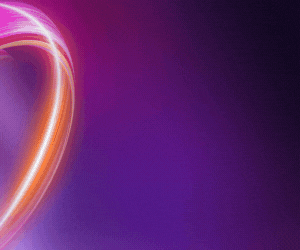Bushfires, pandemics, rapidly evolving technology; disruption is now business as usual for the Australian energy and utility sector.
Rather than putting off strategic planning until disruption ends, companies are now recognising they must continue to make critical investments in technology to meet the needs that result from current disruptions.
The energy sector is increasingly looking at powerful new technology like the artificial intelligence of things (AIoT) to better manage disruption.
What is AIoT?
In the simplest terms, AIoT is the use of AI applied to streaming data from the Internet of Things to provide real-time insights.
Without AI capabilities, IoT devices and the data they produce would have limited value. AI applications would also struggle for relevancy if it weren’t for the IoT data flooding utility companies and others.
AIoT is already transforming the utility industry. As stated in the SAS whitepaper, The Autonomous Grid In the Age of AIoT, today’s investments are more focused on optimising the grid, but future expansion plans are focused on the customer. This chart from the whitepaper shows how survey respondents from American utility companies are using and plan to use AIoT.
As you can see, AIoT adoption is well underway, yet ample opportunity still exists.
To this point, 69 per cent of utilities surveyed say IoT is critical to the company’s success, yet only 57 per cent report using it. Similarly for AI, where 52 per cent agree AI is critical to the company’s success, yet only 27 per cent use it now.
As the pace of digital technology adoption accelerates, AIoT will soon evolve to a point where the devices deployed by utilities are able to simultaneously gather data and learn from it in real-time to improve enterprise decision making and operational efficiency.
Those deploying AIoT technology now will be better positioned to capitalise on it in the future.
SAS Analytics for IoT
SAS® Analytics for IoT supplies utilities with the power of AIoT technology. The solution enables energy providers to analyse sensor data and make automated decisions across the network.
The software’s intuitive visual interface is built on SAS® Viya®, making it easy for business users to quickly select, launch, transform and operationalise data without coding.
In addition, SAS Analytics for IoT runs in a fast, in-memory distributed environment, giving users relevant results that can immediately drive better business insights.
With SAS Analytics for IoT, energy providers can:
- Prevent pole top fires: The software uses real-time sensor data to identify where pole top fires are likely to occur so you can stop fires before they start
- Identify overloaded fuses: The software analyses streaming smart meter data to identify overloaded fuses that may catch fire, enabling preventative action
- Prioritise alarms: With SAS Analytics for IoT, you can determine which substation and control room alarms are most relevant, helping you clear through the clutter and automate decisions to save resources
These use cases are only the beginning. Utility companies are deploying sensors and other devices at the edge of the network and generating tremendous amounts of data. AIoT will increasingly help utilities make sense of this growing mountain of data.
Watch this video to learn more about the power of IoT for utilities.
Microsoft partnership elevates SAS technology
SAS recently announced a partnership with Microsoft that enables SAS customers to easily run their SAS workloads in the cloud. By combining the power of SAS’ world-leading analytics with the flexibility of Microsoft Azure, utilities can take full advantage of streaming IoT data.
For example, Microsoft and SAS are already empowering customers with solutions that help them capitalise at scale on the vast amount of data being generated by the IoT.
Currently, the Town of Cary, NC, is using a joint IoT offering from Microsoft and SAS to power a critical flood prediction solution.
Cary’s Chief Information Officer, Nicole Raimundo, said, “Localised flooding is something all communities experience, and ours is no exception.
“Using sensors, weather data, SAS IoT analytics and the Azure IoT platform, we expect to increase situational awareness of rising stream levels, predict where flooding might occur, and improve our emergency response through automation.
“Cary is also proud to be able to share this data with our neighboring communities to help them better serve their citizens.”
Get started
This marks the conclusion of our Managing Disruption series. We’ve explored the increasing role of analytics in managing disruption, how analytics can mitigate your fire risk and how Southern California Edison uses analytics to power its wildfire mitigation plan.
Are you ready to see how advanced analytics can keep you safe next bushfire season? Contact the team at SAS.
This partner content is brought to you by SAS Institute.


















